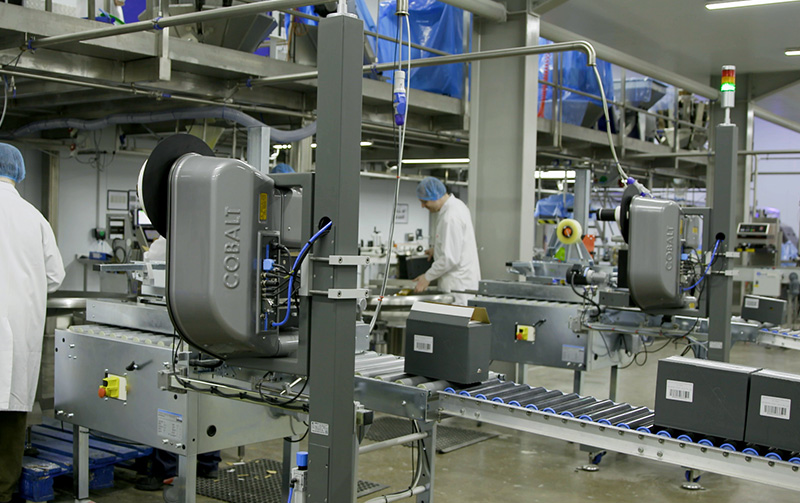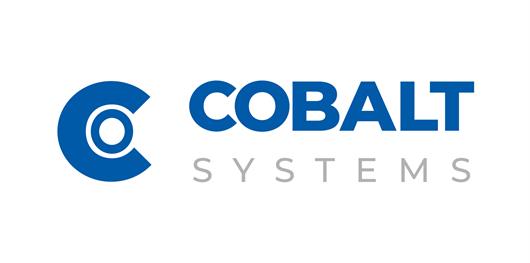 Add My Company
Add My Company
How Cobalt Delivers Proper Labeling

When it comes to labelling, making sure that all the pieces fit together is crucial; from the big to the small, everything can have an effect on the final quality of the label. Cobalt have been working with labels for over 25 years, and we know what it takes to ensure that everything comes together and that the solution fits your needs to a tee.
Downtime due to a labelling failure, especially at the end of a production or packaging line, can lead to downtime throughout the whole process so making sure that your labelling system works is critical to keeping your processes running smoothly.
The different methods of label printing
One of the first things to consider – and the first that we’ll take into account when thinking about providing labelling solutions – is whether a direct thermal or a thermal transfer system is the best option for you. Both have their advantages, and during our consultation we’ll consider what you need from your labelling before making any suggestions.
Direct thermal printing
Direct thermal printing uses chemically treated, heat-sensitive media that blackens when it passes under the thermal printhead. This provides quick and relatively inexpensive printing, especially at point of labelling, with no requirement for thermal ribbon and a simple process. Unlike thermal transfer printing, it doesn’t require a heated ribbon to print, instead directly applying heat to the label. However, the data printed on the label fades with time and environmental factors – such as heat and light exposure, meaning that they are best used for short-term labelling, such as in certain e-commerce settings.
Thermal transfer printing
Thermal transfer printing uses a heated ribbon to produce durable, long-lasting print on a wide variety of materials. Thermal transfer uses a thermal ribbon to transfer the ink from the ribbon to the label, producing a much more long-lasting label with a higher fidelity. The price per label is comparatively higher than direct thermal printing, but due to the use of a ribbon lubricating the printhead, printheads last longer with thermal transfer printing and can therefore be less expensive overall.
We work to make your labels "just work"
We always take into account the full picture when we propose solutions for your labelling needs. We’ll look at the material on the product or packaging that you need to label, the longevity required, the environment where the labelling takes place, and what the label will experience when in use.
Finding out how many labels you need to print per day and what you need your labels to do is a key part of working out what your requirements are, so we’ll do the investigative work to help you find the best solution for your specific circumstances.
We never use spliced labels, and all our labels are BPA-free to ensure the highest quality solution for all of our clients and to comply with legislation. Spliced labels are made of multiple rolls of labels spliced together to make a larger roll, which causes a weak point in the label roll which can easily snap, and the overall efficacy of the printer over time. We only supply labels that haven’t been spliced to avoid unnecessary preventative maintenance.
The media that we use is produced in an environment with 11 points of dust extraction. This means that throughout the manufacturing – or “conversion” – process of the labels does not allow dust from the process to settle on the label facestock before being wound onto rolls. If this were not the case, dust from the conversion process would release from the roll as the labels are printed. This causes dust to enter the printing mechanism, causing premature component failure – primarily the printhead – as well as causing the failure of sensors.
We’ll also take into account the way that you use your printers to ensure that you get the most cost-effective method of printing. For example, if you print high volumes regularly, direct thermal printing might not be right for your business, as the impact on the printhead can mean replacing it more regularly and will cost more money overall. We look at the long-term impacts of your labelling strategy to find the right solution for you, making sure that you get a label printing solution fit for purpose.
Get in touch with our specialist team to find out more about how we make your labelling work as it should.
We can provide full consultation on your labelling processes and ensure your production and packaging lines run as effectively as they should.
For more information on How Cobalt Delivers Proper Labeling talk to Cobalt Systems Limited

